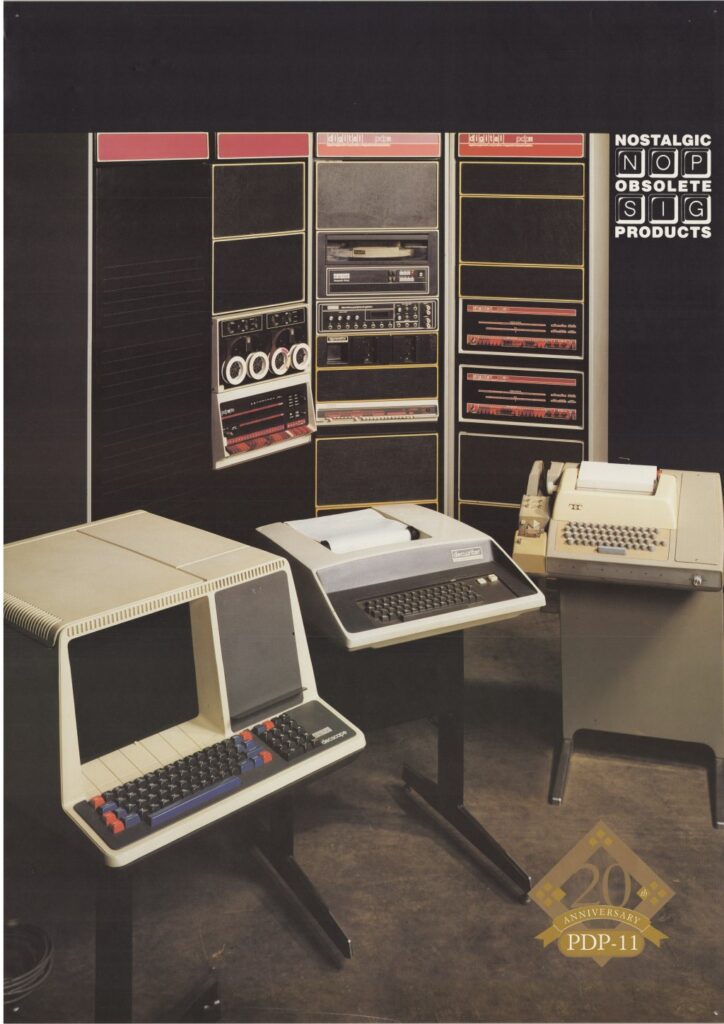PDP-11/20

The PDP-11 computer, an iconic machine of its time, holds a significant place in the history of computing. Developed by Digital Equipment Corporation (DEC) in the 1970s, the PDP-11 (Programmed Data Processor-11) was a versatile and widely used minicomputer.
Physical Characteristics: The PDP-11 featured a compact design, typically housed in a sturdy metal chassis. Its form factor varied, including rack-mounted versions for data centers and standalone models for individual use. The machine’s front panel displayed an array of switches and indicator lights, allowing users to interact with the computer at a basic level.
Architecture and Performance: Built around a 16-bit microprocessor, the PDP-11 offered a flexible architecture that supported various operating systems and software applications. Its processing power, memory capacity, and I/O capabilities varied across different models and configurations, with some models supporting up to 256 KB of memory.
Input and Output: The PDP-11 featured a range of input and output options, including serial and parallel ports, disk drives, tape drives, and terminals. These peripherals facilitated data storage, transfer, and interaction with the computer. Users could connect terminals or other devices to the computer to input commands and receive output.
Programming Languages and Software: The PDP-11 supported multiple programming languages, including assembly language, Fortran, BASIC, and C. Its versatile nature made it a preferred platform for software development, scientific computing, and industrial applications. The machine hosted a wide range of software, including operating systems like DEC’s own RSTS/E and RSX-11, as well as third-party offerings.
Impact and Legacy: The PDP-11 played a pivotal role in the early days of computing, becoming a workhorse in industries such as aerospace, research, and academia. Its influence extended beyond its own success, as the PDP-11 architecture served as the inspiration for later generations of computers, including the popular VAX series.
Despite being phased out in the 1990s, the PDP-11’s impact on computing history remains profound. Its architecture and design principles influenced subsequent generations of systems, and its legacy continues to resonate in the modern computing landscape. The PDP-11 stands as a testament to the pioneering efforts of DEC, contributing to the evolution of computer technology and shaping the way we interact with and harness the power of machines.
